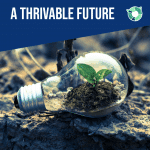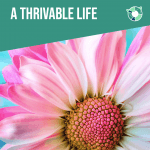Akira Miyawaki, an award-winning botanist and former professor, developed the Miyawaki Method of reforestation/afforestation after observing natural Shinto shrines. These shrines are part of the natural landscape and the vegetation that grows around them is reminiscent of ancient forest structures (Nordson Green Earth). Based on the plant interactions around these shrines, Miyawaki turned his observations into a method to replicate Indigenous forest ecosystems. He used four identified layers: main tree species, sub-species, shrubs, and ground covering (Nordson Green Earth).
In an untouched forest development, the growth of these four layers happens in stages. However, Dr. Miyawaki fast-tracked this evolution by planting all layers at the same time and tending to the area for the first 2-3 years. In this way, a full, mature forest ecosystem is expected within 20 years, rather than the 200 or more years it takes through natural succession (Butfoy, 2023).

Source: Leahy, 2023
Environmental and Social Benefits of the Miyawaki Method
The objective of these Miyawaki woods is not to replace natural forest ecosystems but to reforest degraded and in-need urban and ecological areas quickly and efficiently (Network of Nature, 2021). This can provide many benefits, including:
- Improved Air Quality: Dense Miyawaki forests act as natural air purifiers, reducing pollution levels in urban areas.
- Greenery: Creates aesthetically pleasing landscapes and urban green spaces.
- Enhanced biodiversity: Restores lost biodiversity, supports pollinators, and maintains lost ecological balance.
- Mitigate Heat Islands: Helps regulate airflow and reduce the intensity of trapped heat in urban settings that leads to the heat island effect.
This Miyawaki Method itself also has many benefits including accelerated forest growth, soil restoration, community engagement, low maintenance requirements and more.
Overall, the net loss of forests globally between 2010 and 2020 was 4.7 million hectares per year (Ritchie, 2021). Deforestation is also the cause of 17% of annual global carbon emissions (Nargi, 2019). So the fact that forests sequester carbon from the air while providing a home for 80% of land biodiversity, is one of many reasons to plant more forests. Indeed, Miyawaki himself has planted over 40 million trees in 15 countries using his famous method (Nargi, 2019), while over 3,000 woodlands have been planted inspired by this method (Butfoy, 2023).
However, the Miyawaki Method also draws its fair share of criticisms. So the question remains, is this method the sustainable answer to deforestation concerns, or is it a well-intentioned but impractical way forward? Ultimately, is the Miyawaki Method a revolutionary solution or just one piece of the broader reforestation puzzle?

Source: Reforest Action and Nordson Green Earth
How the Miyawaki Method works
The Miyawaki method follows four principles (Avril, 2017): a wide variety of native species are used, seeds are densely and randomly dispersed, soil is fertilised naturally, without chemical fertiliser, and after 2-3 years, human intervention is unnecessary.
The following steps outline the process, as described in the Kent County Council’s Miyawaki Method Handbook (Avril, 2017):
1. Identify Suitable Land and Design the Plot
Begin by evaluating potential sites to determine their feasibility for planting. Consider factors such as location, accessibility, and how the new woodland will integrate with the existing landscape.
2. Assess Soil Geology, Type, and Condition
Analyse the soil’s texture and composition to understand its water retention capabilities and nutrient content. This assessment will guide necessary soil amendments to create optimal conditions for tree growth.
3. Select Appropriate Native Tree and Shrub Species
Choose a diverse mix of native species that are well-suited to the local environment. This diversity enhances ecosystem resilience and supports local biodiversity. The species need to have a mix of shrubs, sub-trees, trees, and canopy. Major species (the five most commonly found in the area) should equal 50% of the planted woodland.
4. Procure Necessary Materials
Gather all required materials, including selected plant species, soil amendments, and tools, to ensure a smooth planting process.
5. Prepare the Soil
Enhance soil quality by incorporating organic matter and other amendments as needed. Proper soil preparation is crucial for supporting healthy root development and overall plant vitality.
6. Execute the Planting
Plant the selected trees and shrubs densely, typically at a rate of 3–5 plants per square meter. This density fosters competition, leading to faster growth and a self-sustaining ecosystem.
7. Apply Biological Enhancements and Mulch
After planting, add biological enhancements such as compost teas to introduce beneficial microorganisms. Apply mulch to retain soil moisture, regulate temperature, and suppress weed growth.
8. Implement Security Measures
Protect the newly planted area from potential threats like vandalism or grazing animals by installing appropriate barriers or fencing.
9. Maintain the Woodland
Provide necessary care during the initial establishment phase, which may include watering, weeding, and replacing any plants that do not survive. This maintenance is typically required for the first two to three years.
10. Monitor Woodland Development (optional)
Regularly observe and document the growth and health of the woodland. Monitoring helps assess the success of the planting and informs any additional interventions needed to support ecosystem development.

Source: Sustainability for all, Acciona
The Negative Side of the Miyawaki Method
While the Miyawaki Method has gained global attention and praise for its potential in reforestation, combatting biodiversity and climate change, experts have pointed out several criticisms and disadvantages (Giseburt, 2023).
Resource Intensive
Implementing the Miyawaki Method can be financially demanding. Expenses arise from extensive soil preparation, procurement of a diverse array of native seedlings, and the labour-intensive nature of dense planting. Establishing such forests requires significant investment, which may not be feasible for all communities or organisations.
Limited Genetic Diversity
The method often involves planting a high density of trees of the same species, which can result in a lack of genetic diversity. This homogeneity may make the forest more susceptible to diseases, pests, and other environmental stresses, potentially undermining the ecosystem’s resilience.
Uniform Age Structure
Miyawaki forests typically consist of trees that are all the same age, leading to a uniform canopy structure. This contrasts with natural forests, which have a mix of tree ages and sizes, contributing to structural diversity and ecological stability. The lack of age variation in Miyawaki forests may limit habitat diversity for various wildlife species.
Ecological Incompatibility
Critics argue that the Miyawaki Method does not always account for local ecological contexts. Implementing this technique in regions where dense forests are not the native ecosystem can lead to ecological mismatches. For instance, planting dense forests in areas naturally dominated by grasslands or sparse vegetation may disrupt existing ecological balances and fail to support native wildlife adapted to open habitats.
High Water Requirements
Establishing Miyawaki forests demands substantial water resources, especially during the initial growth phases. In regions facing water scarcity, this requirement can pose significant challenges and may not be sustainable in the long term.
Unsuitable for All Soil Types
The Miyawaki technique may not be suitable for all locations or types of soil. It requires specific soil conditions to be successful and may not be effective in areas with poor soil quality or where there is a high risk of erosion.
Lack of Long-Term Data
While the Miyawaki Method has been implemented in various regions, there is a scarcity of long-term studies evaluating the ecological outcomes of these plantations. Without comprehensive data over extended periods, it is challenging to assess the sustainability and ecological integrity of these man-made forests compared to naturally regenerated ones.
Conclusion and Call to Action (CTA)
The Miyawaki Method offers several advantages: rapid forest growth, enhanced biodiversity, and the restoration of native ecosystems. Trees planted using this technique can grow up to ten times faster than those in conventional plantations, reaching maturity in 20-30 years. However, criticisms include higher initial costs owing to soil preparation and dense planting, potential neglect of local ecological nuances, and the creation of forests where all trees are of the same age, differing from natural forests with varied age structures.
The Miyawaki Method promotes sustainability by restoring native forests, enhancing biodiversity, and sequestering carbon dioxide. Its emphasis on native species ensures the resilience and adaptability of the forests to local conditions. Once established, these forests require minimal maintenance, making them self-sustaining. However, the method’s sustainability can be influenced by factors such as site selection, species choice, and local environmental conditions. Careful planning, site-specific ecological assessments, and ongoing research are crucial to ensure that such initiatives contribute positively to environmental restoration without unintended negative consequences.
A Thrivable Framework
Forests are essential for building a thrivable future because they support nature, protect biodiversity, and help fight climate change. They act as natural air filters, absorbing carbon dioxide, and improving air quality. Beyond environmental benefits, forests also provide food, medicine, and jobs for millions of people. In the THRIVE Framework, which focuses on long-term sustainability and responsible innovation, forests are a key example of how we can work with nature instead of against it. Protecting and restoring forests helps create a future where both people and the planet can grow and flourish together.
Values-Based Innovation, as emphasised in the THRIVE Framework, is about creating solutions that align with ethical principles, sustainability, and long-term well-being rather than just short-term gains. It prioritises innovations that respect ecological limits, enhance social equity, and promote regeneration rather than exploitation. In the context of environmental restoration, this means using methods like afforestation, circular economies, and green technology to create systems that benefit both people and the planet. In this way, we can allow forests to flourish and let nature regenerate, a core description of Strong Sustainability, another Foundational Focus Factor of the THRIVE Framework.
Conclusion
The Miyawaki method aligns closely with the UN’s Sustainable Development Goals, particularly SDG13: Climate Action, addressing climate change (UN, n.d). Rapidly growing dense native forests significantly increases carbon sequestration, directly reducing atmospheric carbon dioxide levels. This method enhances ecosystem resilience, crucial for mitigating climate-related disasters such as floods and heatwaves. Miyawaki forests also lower urban temperatures, combatting the heat island effect intensified by global warming. In doing so, this strategy can help us promote climate action at local levels and ultimately help us increase health and well-being goals (SDG3: Good Health and Well-Being). Finally, in the most direct way, the Miyawaki method aims to sustainably manage forests and combat land degradation, which is fully aligned with SDG15: Life on Land.
You can follow THRIVE’s blog, check out our podcasts, and join monthly webinars to hear from thought leaders and learn about Thrivability. Finally, subscribe to our newsletter to stay up to date with the latest from THRIVE Project. By staying engaged, we can ensure that our collective voice makes a difference for generations to come.























